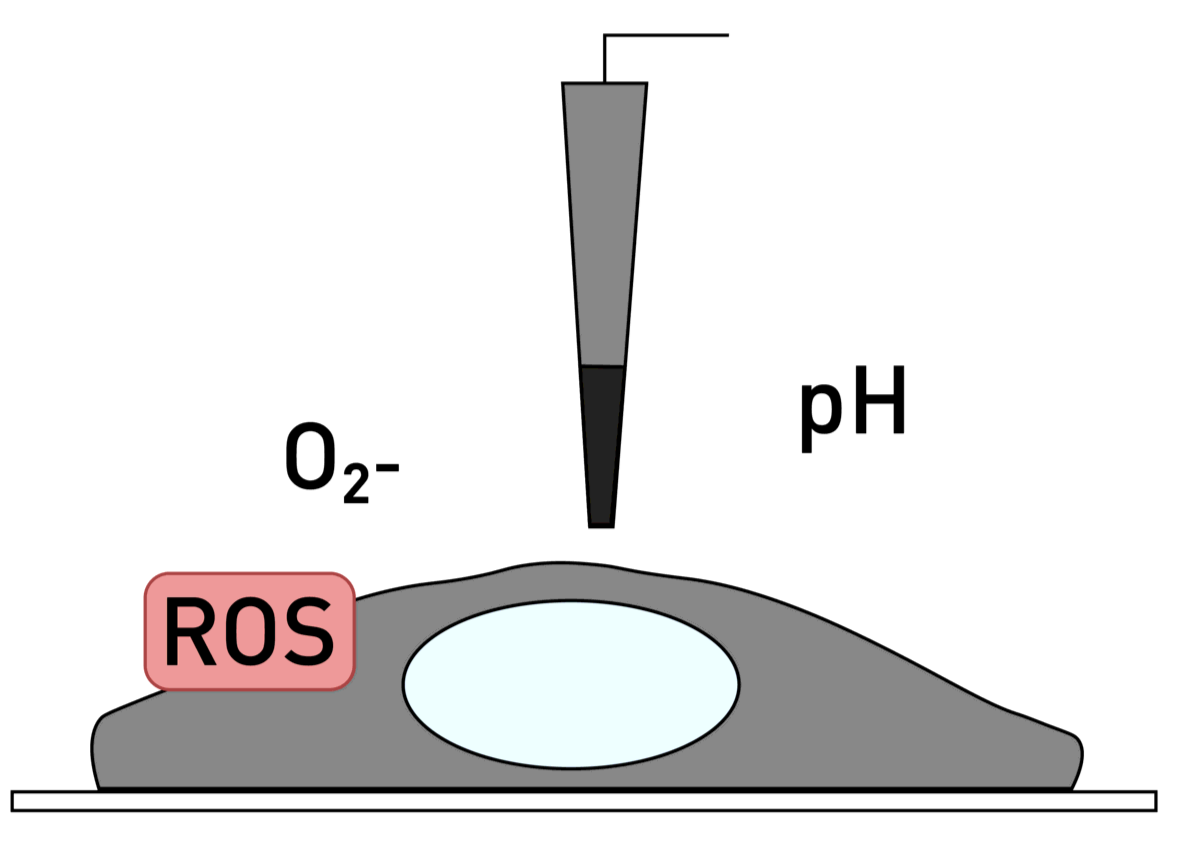References
9 - Vaneev, A. N. et al. (2020) ‘In Vitro and in Vivo Electrochemical Measurement of Reactive Oxygen Species after Treatment with Anticancer Drugs’, Analytical Chemistry, 92(12), pp. 8010–8014. doi: 10.1021/acs.analchem.0c01256.
10 - Zhang, Y. et al. (2019) ‘High-resolution label-free 3D mapping of extracellular pH of single living cells’, Nature Communications. Springer US, 10(1), pp. 1–9. doi: 10.1038/s41467-019-13535-1.
9 - Vaneev, A. N. et al. (2020) ‘In Vitro and in Vivo Electrochemical Measurement of Reactive Oxygen Species after Treatment with Anticancer Drugs’, Analytical Chemistry, 92(12), pp. 8010–8014. doi: 10.1021/acs.analchem.0c01256.
10 - Zhang, Y. et al. (2019) ‘High-resolution label-free 3D mapping of extracellular pH of single living cells’, Nature Communications. Springer US, 10(1), pp. 1–9. doi: 10.1038/s41467-019-13535-1.


The ability to probe single cells within their environment is of great importance in progressing the understanding of cellular processes and phenotypes. SICM nanopipettes can be easily modified to be used as carbon nanoelectrodes. These nanoprobes can be deposited with platinum to monitor oxygen consumption both inside and outside the cell8.

Thus far, this novel single cell probing technique has been used to investigate extracellular oxygen within brain slices and intracellular oxygen concentrations within individual neurons, melanoma cells and plant cells. The breadth of applications for this nanoprobe are apparent, offering a novel method for metabolism investigations.
Due to its small size, the nanopipette can be inserted into the cell to take measurements with minimal disruption to cell function as well as offering high spatial and temporal resolution to the measurements. Double barrel nanopipettes can be used to combine biosensing with SICM to give high resolution mapping of species on or in living cells.
Reactive Oxygen Species Nanoprobes
3D pH mapping

Current methods of pH detection, such as microelectrodes and fluorescence, have considerable limitations due to slow response times, large footprint and high background pH levels. SICM double barrel nanopipettes can be modified which offer a label free and highly sensitive method of pH detection. This nanoprobe allows for simultaneous high resolution SICM topographic scanning and high sensitivity pH-sensing. This novel nanoprobe has been applied to both breast cancer cells and melanoma cells to get a better understanding of the role pH plays in invasive behaviour and metastasis10.
Oxygen Nano Sensor
Biosensing
Nanoprobes have been used to monitor changing reactive oxygen species (ROS) concentrations in cancer cells in response to chemotherapeutic drugs both in vitro and in vivo. Due to the small size of the nanoprobe, high resolution and low response times, this technique has allowed for in vivo ROS measurements inside live mice9.
ROS detection using fluorescence in vivo is not practical. ROS nano probes offer highly sensitive in vivo measurements of ROS in real-time.
ROS detection using fluorescence in vivo is not practical. ROS nano probes offer highly sensitive in vivo measurements of ROS in real-time.

ICAPPIC Limited (main office)
+44 (0) 208 383 3080
info@icappic.com
Address: The Fisheries, Mentmore Terrace, London, E8 3PN, United Kingdom

